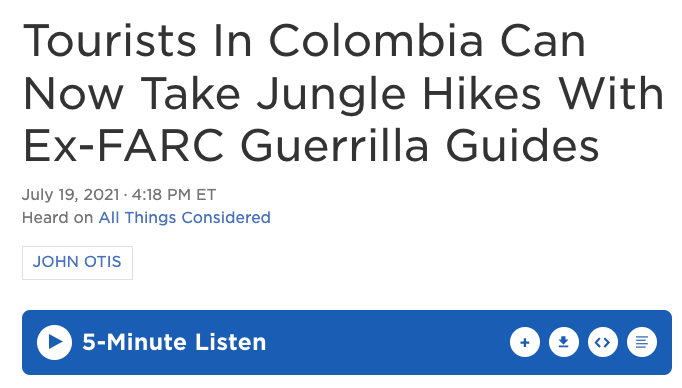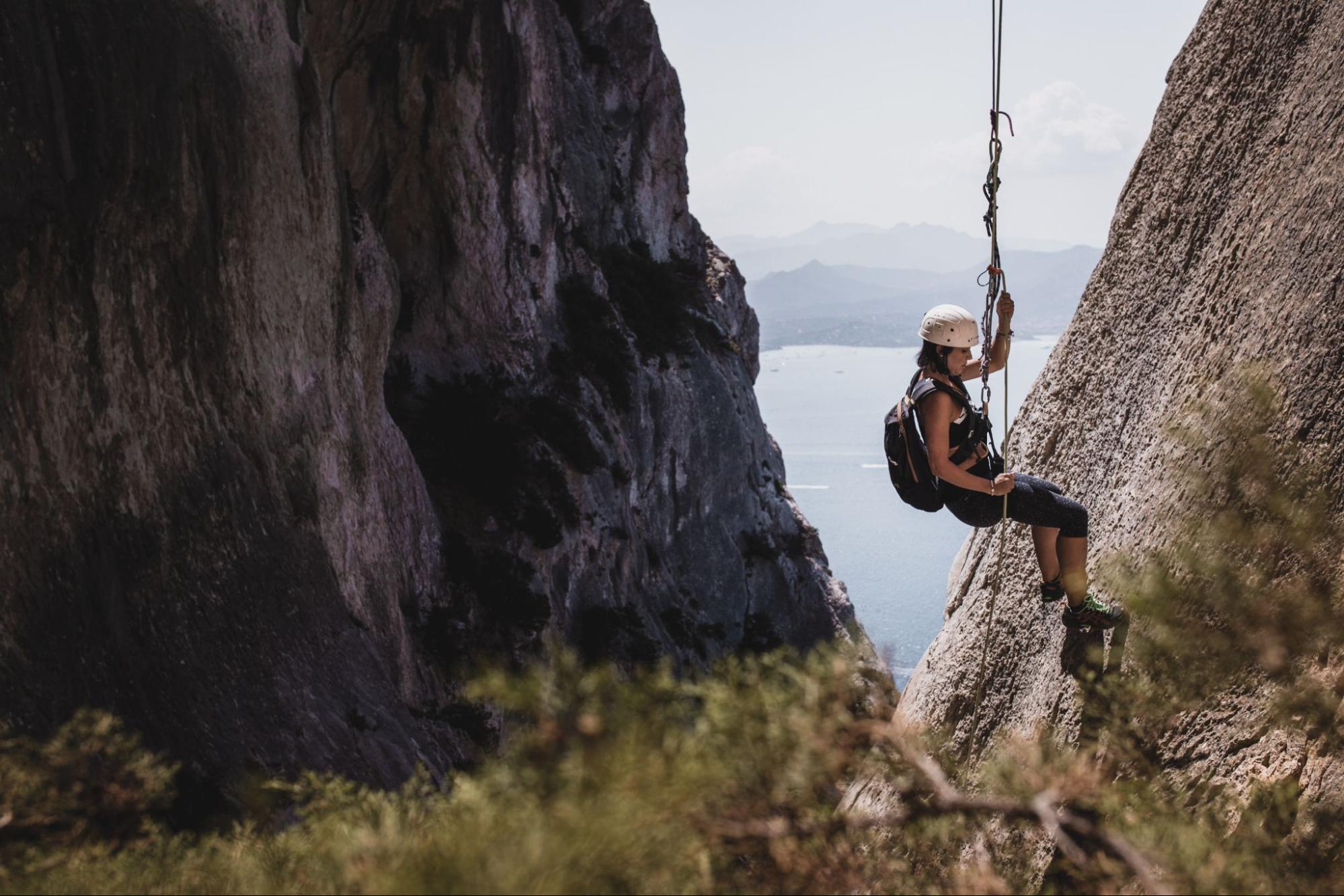3.1 Chapter Overview
Something extraordinary is happening in remote regions of Colombia. Former members of the Revolutionary Armed Forces of Colombia (the FARC) are offering eco-tours to internationals in former conflict zones where they’ve lived and fought for decades. Many joined the guerrilla insurgent group as teenagers and have spent most of their lives fighting the Colombian army and paramilitary groups to maintain geographic and social control of rural regions throughout the country. Where once they launched down cliffs with tree vines in order to escape the Colombian army, they now guide tourists to cavern floors equipped with rope and safety harnesses (Otis 2021).
Over the past twenty years, during the last decades of Colombia’s civil war, the Andean mountain, plains, and rainforest regions that former FARC members controlled were considered precarious areas for travelers. During that era, the FARC took hostages to fund their campaign and pressure the government to release imprisoned rebels. Now that peace accords have been signed between the FARC and the Colombian government, former combatants offer rappelling, trekking, rafting, and educational programs to share their lives and experiences during the war. Because they know the land and its resources so well, former FARC soldiers make for exceptional tour guides.
Listen to the 5-minute story of one group’s new business: “Tourists In Colombia Can Now Take Jungle Hikes With Ex-FARC Guerrilla Guides” (figure 3.1 and 3.2). As you listen, what do you hear about the aspirations and life experiences of the guides?
Figure 3.1 NPR segment: Tourists In Colombia Can Now Take Jungle Hikes With Ex-FARC Guerrilla Guides
Figure 3.2. Photo of female tourist rappelling down a cliff
Considering what you have learned about social change in the first two chapters, what inquiries do you have about the lives of these FARC soldiers turned tour guides and the society where they were born? What might have transpired to push these former FARC combatants to spend years fighting against the state of Colombia? What has changed to now enable them to find such a different place in society?
These inquiries and this Colombia story exemplify well how globalization plays a role in social change. In this chapter, we’ll explore how social change dynamics play a role in scenarios like these. Through the lens of globalization, we’ll examine how global inequality exists, how it is measured, and how countries are categorized, or ranked according to that inequality. We’ll focus on the two dimensions of inequality seen globally: inequality between nations, and inequality within nations. We’ll answer the questions:
- How and why does inequality exist within countries?
- How and why does inequality exist between countries?
- How does globalization impact inequality?
At the end of this chapter, we’ll turn to the story of Colombia’s war, and the peace process, as a case study to illustrate these ideas. As we do, we’ll revisit more journeys of former members of the FARC as they reintegrate into peace-time Colombian society.
3.1.1 Licenses and Attributions for Chapter Opening
“Chapter Overview” by Aimee Samara Krouskop is licensed under CC BY 4.0.
Figure 3.1. Tourists In Colombia Can Now Take Jungle Hikes With Ex-FARC Guerrilla Guides were published by National Public Radio (NPR) All Things Considered, Wish You Were Here special series on July 19, 2021. License Terms: Standard YouTube license.
Figure 3.2. Photo by Riccardo Pitzalis on Pexels.com


